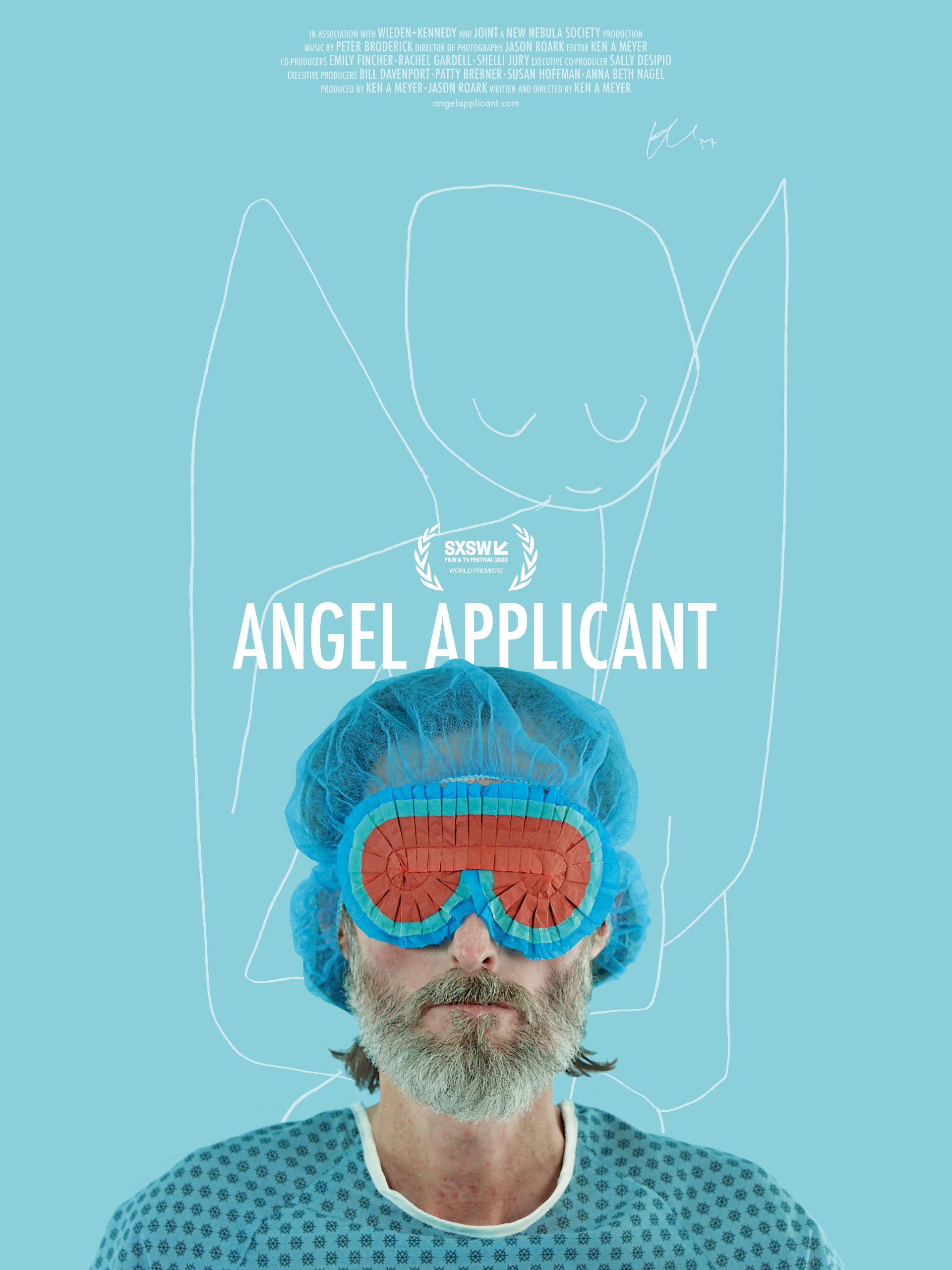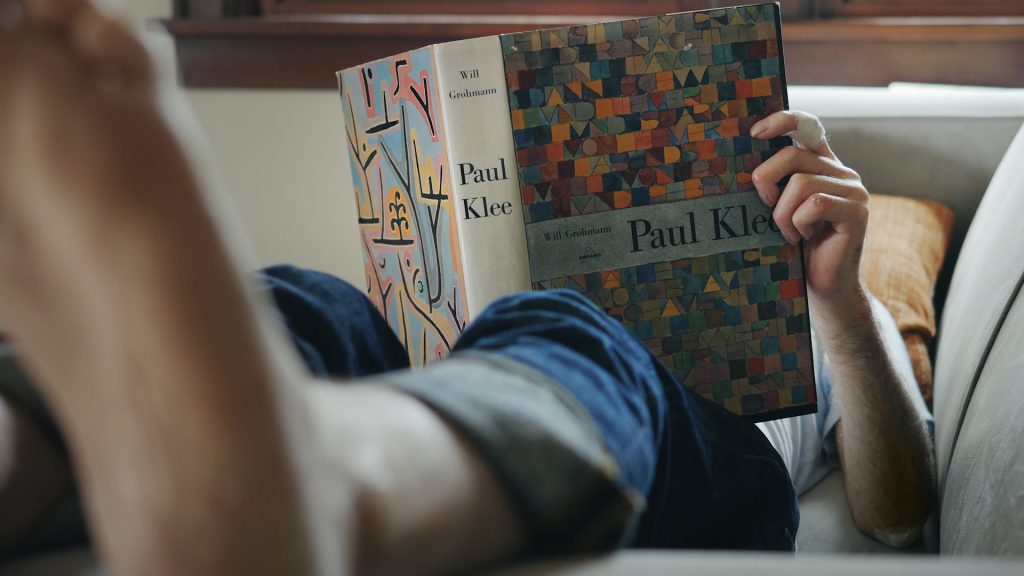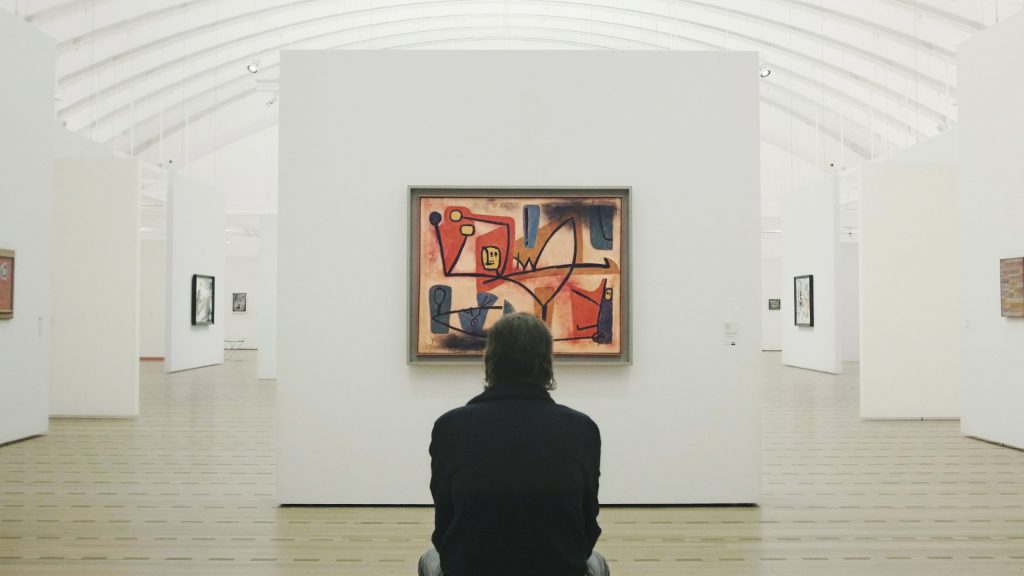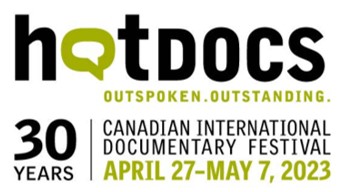Filmmaker 5 with Ken August Meyer: Angel Applicant

In 1933 Swiss-German painter Paul Klee fled Germany to escape the vilification of modern artists by the Nazi party. Taking up residence in Switzerland, Klee created his art in isolation as a mysterious illness began wreaking havoc on his body. While his body changed, so did his artwork. In Angel Applicant, filmmaker Ken August Meyer, explores Klee’s expressive last works after being diagnosed with the same life-threatening disease, systemic scleroderma. While curating Klee’s work, including 50 drawings of angels created in the last months of his life, Ken discovers powerful messages connected to his own mortality. The connection Ken makes to Klee bears witness to how art can inspire us to seek beauty in the everyday and to make the most of each moment in our lives.
Angel Applicant makes its international premiere 2023 Hot Docs Festival. Classic Couple Academy asked narrator and director Ken August Meyer about Angel Applicant.
Filmmaker 5.1: How did your experience as an art director inform the creative direction of Angel Applicant?

I really leaned on my experience as an art director for the vignettes and reenactments—colorful unexpectedness dappled throughout which I hoped would make some of the somber subject matter more palatable and give the film a sense of levity. I think my experience working on advertising campaigns at Wieden+Kennedy in the past also helped me give the film a graphic continuity. Because it’s sort of a virtual art exhibit in some ways, I really wanted to create a system for all the various elements, especially Klee’s artwork and their titles. I kept a rhythm and pace with the typography/captions in order to make it feel like a curation with a graphic thread pulling it all together. In the same way that a quilt utilizes different pieces of fabric in various shapes, I wanted there to be a cohesive nature that makes it all feel like a collective whole.
Filmmaker 5.2: Not to take away from your other collaborators, but can you describe the working relationship you had making this film with Jason Roark, who serve as producers and cinematographers on the film?
I’m glad you asked this. This film would not have been possible without Jason Roark. Not just as an ally in its creation utilizing his production chops or his beautiful cinematography, but because he is an amazing human being. His empathetic demeanor allowed me to feel naturally vulnerable on camera which ultimately made me comfortable being a subject of the film—to have him around at medical appointments as a fly on the wall or embedded with our family adventures. Jason and I have a quick code of communication that made the process very organic. We also share an affinity for some Panasonic gear that allowed me to take hold of the same camera at times and point it at my family or often at myself or circumstances which gave us a flexible workflow. The film has been a journey for us both in the most genuine way.

Filmmaker 5.3: Within the film you examine the progression of Paul Klee’s illness and the evolution of his art, with you acting as both art historian and art critic. When did you just know you had a connection to Klee and his art—and how has that connection deepened not just through your research but through the filmmaking process?
Not long after my diagnosis, I found out that I share the same form of scleroderma as Klee. I always had an appreciation for his work since studying it in art & design school. But it wasn’t until my disease progressed into a more life-threatening situation that I began to really feel connected to his last works. I could start seeing things in particular pieces that were happening to me in the most literal way. But his angels and explorations of mortality resonated with me profoundly when uncertainty crippled my everyday life. As things progressed for me, the same urgency found in his late works propelled me to also create something, to leave some kind of legacy. As if what was happening to me would feel like it had some sort of purpose behind it. I certainly felt there was an opportunity to generate awareness about scleroderma, but I also wanted to demonstrate to my daughter that I fought the disease in the best way I knew how. Overtime, the film manifested into a spiritual introspection that became far more personal than I intended at the outset.

Filmmaker 5.4: The film explores your personal experience from mystery symptoms, to diagnosis, to illness progression with systemic scleroderma. How did you determine what to share, what to withhold from the film? When did you know you had to tell this story yourself as narrator?
That’s a great question. I had many internal battles about sharing my story and how much of it to tell. I still do in fact! Initially I wanted to stay behind the camera. The disease has made me sort of reclusive over the years, rewiring my personality to a degree, and I really wanted to confront that. I realized at some point that I could be candid and self-deprecating in ways a different subject might not be willing in order to create a human connection with an audience with bits of wry humor. To share the psychological impacts of living with chronic illness, so that people not affected with such, might better understand what it’s like. In this way, I could take medical information and make it more digestible than complicated jargon by having fun with it at times. I became more comfortable making the film very personal, but not to the extent that I was barfing up everything and turning the viewing experience into a massive therapy session. I became judicious in what would portray the life of someone suffering with any chronic disease really. Hopefully anyone facing adversity can relate. There are certainly some psychological impacts that go deeper that I have kept close. There are also a number of things that might have made the film gratuitously gross, like leaking feeding tubes. I’ll stop there.
Filmmaker 5.5: What do you want audiences to take away from viewing Angel Applicant? What is your greatest wish for the film?
I really hope this film creates a broader understanding of scleroderma. That people suffering from its effects feel less alone. But I also really want people to understand what it’s like living with chronic illness. I was thinking about this quite a bit. Though things got really difficult as my disease progressed over the years, in a lot of ways it was far more frustrating in the early stages. When no one understood what was happening. Most symptoms of the disease are invisible at first and that overwhelming feeling of uncertainty that accompanies them can make you feel alone. I want to help change that.

BONUS QUESTION: The inscription at the top of Paul Klee’s final, unfinished painting, roughly translates to “Not all of the unexplained is in need of explanation.” Klee had no knowledge of his illness, and the cause of systemic scleroderma is unknown to all affected by it. What do you believe this final message from Klee says to anyone struggling with disease? What does it mean to you?
The closer translation (from which I distilled that message) is actually what Alexander tells me in person proceeding my distillation—a little closer to… “Should we know all the answers to our questions? We’ll no, I don’t think so.”
I suppose what it might say to anyone struggling with disease, is that we can live a meaningful life in spite of uncertainty. Within our struggles, our existential questions of “why me?” are pointless to dwell on and there are perhaps more important things to focus on—to live in the present. But for me, the message is a profound statement on the great mystery of it all. That we don’t necessarily have to restrain our skepticism, but we don’t need to know everything either. In fact, our greatest questions can challenge us to open our minds and hearts.
CLASSIC COUPLE ACADEMY RECOMMENDS
See the international premiere of Angel Applicant at Hot Docs 2023
Sunday, April 30, 2023
3:30PM TIFF Bell Lightbox 1
Friday, May 5, 2023
5:45PM Scotiabank Theatre 7

Visit the Scleroderma Research Foundation to learn more and to donate and help fund the most promising medical research aimed at improved therapies and, ultimately, a cure for scleroderma.

